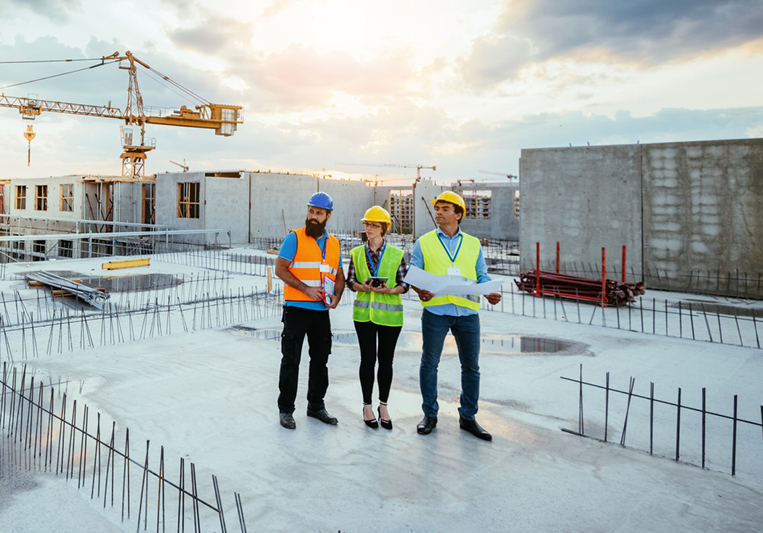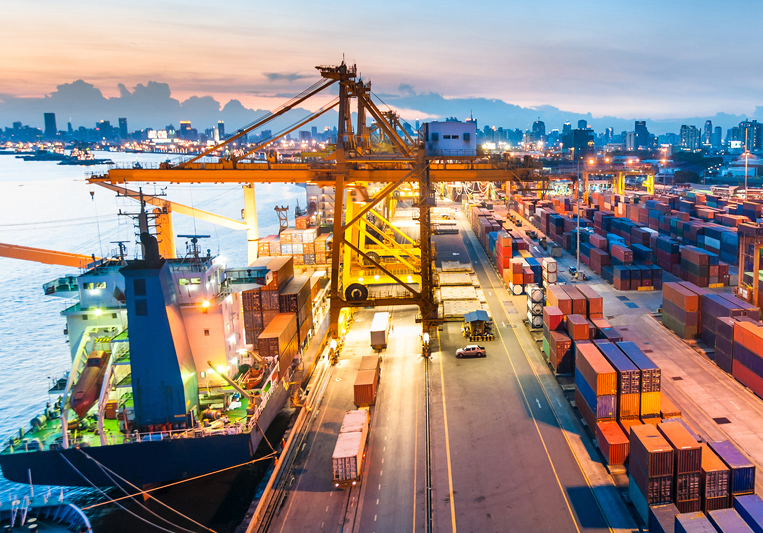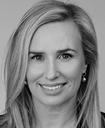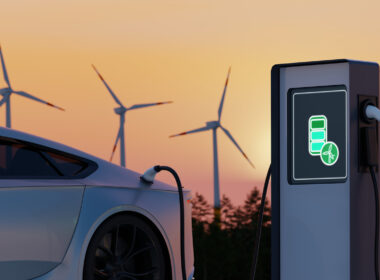The construction industry is one of the essential pillars of modern society. Yet the sustainability of the industry is in question following the COVID-19 pandemic and the collapse of multiple high-profile construction companies. Despite a boost in government spending in the sector, procurement and spikes in material prices pose serious challenges for the industry.
Construction is Australia’s third largest industry, responsible for building the infrastructure that is the foundation of modern society. In the current climate, the demand on the industry continues to grow. We have seen significant increases in government spending on projects to boost employment, improve connectivity and unlock renewable energy solutions following the COVID-19 pandemic. Like a rubber band, the construction industry must stretch and increase capacity to procure these major projects designed to slingshot Australia to economic recovery.
The increasing demand for infrastructure and housing, coupled with pandemic-related supply chain delays, cost escalation and labour shortages, has created the perfect storm, exposing the underlying vulnerabilities of the sector.
Here in Australia we have witnessed the collapse of leading builders, which has sent ripples through the broader economy. The high-profile collapse of companies such as Clough, Condev and Probuild has caused delays and cost increases to important infrastructure and housing projects, eroding some public confidence in the ability of companies to meet Australia’s infrastructure requirements and energy targets.

Downer EDI’s recent sale offer of its transport projects business further highlights the increased risk in building projects, compared to long-term service contracts. The impact of these vulnerabilities (particularly around price escalation) is also heavily felt by ‘vertical’ builders in the building construction market.
This climate presents a significant opportunity and catalyst for step change and industry-wide innovation in the way projects are procured, delivered and governed to reduce industry vulnerability, harness innovation and accelerate the journey to net zero. Governments, private clients, contractors and the supply chain must work together to drive long overdue, transformational industry reform.
The market
The time for reform is now. We see the tsunami of projects in the pipeline following the familiar cycle of sharp infrastructure investment in an attempt to combat recession. In 2009, following the Global Financial Crisis (GFC), the Federal Government announced a stimulus of almost $50 billion in infrastructure spending including the Nation Building and Jobs Plan to alleviate unemployment and boost economic activity. There is a strong case that the investment in developing educational facilities and housing played a central role in Australia’s recovery from the GFC.
What does a sustainable industry look like? It is an industry that recognises the complexity of the task in delivering infrastructure, and the long and often demanding process to bring a project to life. It puts people at the heart of delivery solutions and harnesses the principles of innovation, automation and offsite manufacturing to mitigate health and safety risks, improve productivity and increase capacity.
As the government once again seeks to build its way to economic recovery, the industry faces new challenges. The pandemic has severely weakened supply chains and exacerbated skilled labour shortages. Inflation and price-escalation has dramatically and quite quickly shifted the risk profile of many major projects.
New technologies in freight, travel, energy production and energy storage present new markets for designers and contractors. These opportunities call for increased spend on research and development. In order to deliver the unprecedented infrastructure pipeline, construction companies must innovate and truly commit to building a more sustainable future, or risk being left in the past.
Sustainable industry
Across the globe, countries are transitioning to cleaner energy sources and organisations are setting net zero targets. As an industry that accounts for significant global energy-related carbon dioxide emissions, it is our moral obligation to drive transformational change to deliver a future that benefits the generations to come. Industry-wide transformation is under way on the journey to net zero, but we must accelerate the pace of change. We must also look to drive more holistic sustainable outcomes if we have any hope of delivering the infrastructure pipeline ahead of us.

What does a sustainable industry look like? It is an industry that recognises the complexity of the task in delivering infrastructure, and the long and often demanding process to bring a project to life. It puts people at the heart of delivery solutions and harnesses the principles of innovation, automation and offsite manufacturing to mitigate health and safety risks, improve productivity and increase capacity. It is an industry that genuinely cares about the wellbeing and mental health of its people, driving proactive interventions that tackle the issues at the root cause before they create risks for people. It is building a workforce that is truly representative of the society we operate within; one that is diverse and inclusive, and ensures people feel a sense of belonging. It is an industry that invests in its people to increase capability and capacity.
Further, a sustainable industry must be able to withstand changes in the market and remain viable. This requires adaptability in process and flexibility in cost. In the context of infrastructure projects, the former requires innovation on the part of contractors, but the latter requires collaboration and cooperation with clients to ensure that contractors do not bear risks which are outside of their control. Responsible risk allocation is critical to building a resilient industry and ensuring employees, suppliers and stakeholders are compensated in times of crisis and volatility.
The demand for infrastructure will continue to increase in support of an ever-growing population, so of course the industry must also continue to grow and evolve. Innovation is key to unlocking value and ensuring that businesses can sustain dynamic market conditions. Companies that make strategic investments in research and development to measurably improve productivity can better protect against shifts in consumer demand or price fluctuation.
Opportunities and solutions
Productivity
The construction industry’s perennial productivity problem is a major opportunity waiting to be unlocked. When compared to other sectors that have embraced new technologies – automated manufacturing, distribution systems and customer-intelligence gathering – construction’s productivity evolution has moved painfully slowly.
The construction industry’s productivity today is lower than it was in 1990. Since then, the gap between the productivity of the construction industry and that of other industries has just been growing. The Australian Constructors Association recently conducted an analysis of the cost that low productivity in construction has caused the Australian economy. From 1990 to 2021, while other industries achieved productivity growth of 31.8 per cent, construction saw a fall in productivity of 1.8 per cent. As of 2021, the annual potential foregone construction output due to weak productivity was $47 billion.
The low level of productivity across the industry is affecting our ability to make significant change in capability and capacity. The case for change is clear and there is an enormous opportunity to shift the industry to a place that represents global best practice through innovation, digital transformation and collaboration.
Innovation
Greater investment in innovation and digitisation is key in enabling faster, safer and more efficient construction, improving build quality, reducing waste and supporting the creation of a more digitally skilled workforce. To maximise the contribution that construction can make to the economic recovery after the pandemic, both governments and private sector clients must acknowledge the value in the wider adoption of technology, while also driving reform around procurement decisions to facilitate, encourage and reward such investment.
Greater investment in innovation and digitisation is key in enabling faster, safer and more efficient construction, improving build quality, reducing waste and supporting the creation of a more digitally skilled workforce.
Techniques like off-site manufacturing present a strong opportunity for automation to be incorporated in the construction process. Developing off-site manufacturing facilities can enable digital engineers and project teams to design and precision manufacture a range of components for use in major building and infrastructure projects, including twin walls, floor slabs, pillars, facades and modular bridges.
Digital engineering and mapping to develop virtual twins of assets can allow construction companies to de-risk both the design and construction phases of projects. Digital designs can improve predictability of costs and programs and can also assist in developing an understanding of an asset’s carbon footprint. During construction, digital models can be linked to construction activities, which can improve productivity and consistency.
This kind of innovation in construction methodology can serve a dual purpose. Not only will it improve productivity, but automation and digitisation can also help address labour shortage issues, and health and safety risks. Widespread adoption of innovative practices will therefore be critical for the industry to tip the scales to sustainably meet the demand for major infrastructure projects.
Collaboration
The infrastructure sector in particular is dependent on government planning and policy; at the same time, it is clear that governments rely upon the industry to construct quality assets on time, promote cash flow and create jobs. This co-dependence calls for greater collaboration in the way that client and industry participants plan, procure, contract and manage projects (including change).
The growing infrastructure pipeline also necessitates the need for greater collaboration between clients, contractors and supply chain – as in any sphere (not just construction), when the pressure is on to deliver a bigger portfolio of work, open and constant dialogue and collaboration become more critical.
One key vulnerability which has emphasised the need for greater collaboration is the much-publicised hyperinflation of material costs.
A recent market sentiment survey by the Australian Constructors Association and Arcadis found construction material input price rises of up to 70 per cent in the 12 months leading up to publication of the report. This hyper-price escalation is a major problem for an industry operating mostly on fixed price contracts, with some negotiated and locked-in years prior.
Reasons for the price increases are largely beyond the control of business. These include supply chain challenges caused by the COVID-19 pandemic, with closed borders reducing migration and the flow of skilled workers. The economy-boosting infrastructure investments by state and federal governments, along with pent-up consumer demand, have created a heated market for people, goods and services. Geopolitical instability has impacted on oil prices and there has been a string of adverse weather events in parts of the country.
Pricing for hyper-escalation is a lose-lose proposition. It can be almost impossible to foresee exactly which items may become subject to more rapid price increases. If you put a realistic risk allocation on items, you may price yourself out of the market in a competitive industry. However, the client may also end up paying a premium if input prices decline.
Rapid cost increases, material shortages and supply chain issues also affect contractors’ ability to accurately price work. In a traditional “hard dollar” contracting arrangement, this can lead to significant claims which can quickly develop into major disputes. Contractors are now becoming increasingly unable to bear the risk of price escalation (where the alternative of pricing the risk represents no value for money to clients or for governmental budgets), especially during periods of rapid hyperinflation.
Risk sharing contract models, such as those involving incentivised cost risk sharing, are improvements from lump sum contracts. However, they still put contractors at risk of losing overhead recovery and profit for events largely outside their control – such as price escalation. This is inequitable and means the asset owner is potentially receiving a finished product cheaper than it cost to build it. Regardless of the form, commercial models should contain suitable price adjustment clauses (rise and fall) to ensure future fluctuations are dealt with fairly.

Price escalation does not just affect the client and constructor – it also impacts the ability of the supply chain to accommodate the pipeline of work in Australia. Less resilient businesses, often operating on slim margins, are becoming insolvent and leaving clients with half-finished jobs and unpaid subcontractors. As one of Australia’s largest industries, construction company failures exact an enormous social cost and have the potential to fracture our economy.
It is therefore in the interests of government, clients and construction businesses to work together to resolve these price escalation challenges.
A key issue with hyper-escalation is that subcontractors and suppliers are often unable or unwilling to give or hold a fixed price. Without a cost adjustment mechanism, asset owners are effectively asking head contractors to price significant and unforeseen escalation.
The good news is that clients and government are aware there is a problem. It’s been hard to avoid, given the recent headlines around company collapses. Both fair allocation of risk for new contracts, and mechanisms to address issues with current contracts, are needed to allow construction companies to build sustainable business.
Improving cash flow
Construction projects have high working capital requirements to fund and manage the upfront cash outlays arising from high mobilisation costs, weekly paid labour, monthly paid staff, plant and equipment, and early supply chain engagement.
Few other industries are expected to finance such large amounts of work undertaken on behalf of a third party.
Improving the liquidity of the sector through advance payment arrangements assists with site mobilisation costs and enables early ordering and storage of price sensitive materials, making for a more sustainable, and resilient sector.
Often the failure to collaborate presents serious challenges in the transition from project inception and planning through to construction. In major infrastructure projects, clients may engage a design firm to create a front-end design which is forwarded to contractors to develop, complete and finalise for construction purposes.
Liquidity can also be influenced by frequent and timely payments throughout the whole supply chain by adopting simplified requirements for payment and variation claims processes, avoiding excessive security from contractors, and increasing bid cost reimbursement to tenderers.
The commercial delivery model is paramount in tackling these issues. Where project scope and design are well developed and risks are quantifiable, seeking lump sum prices from the market may be appropriate. In other situations, a more transparent approach to the management of cost and broader project risks should be adopted.
Commercial delivery models that tie up cash or create negative cash flow positions for contractors and suppliers increase risk and hinder investment in technologies which can improve productivity and sustainability.
Improving value for money considerations
Further, when assessing public infrastructure projects, clients are required to demonstrate “value for money” by considering a variety of factors such as installation, construction, maintenance and indirect costs, as well as benefits like downstream job creation and cost-saving innovation.
While government and industry recognise the challenges with defining and assessing the value for money equation, greater transparency in this process will promote collaboration and create greater efficiencies in the procurement process for major projects.
More collaborative contracting arrangements provide a key opportunity to align the interests of all parties to what is best for the project. Problems can be resolved as they occur to achieve mutually beneficial outcomes and this facilitates earlier involvement of the supply chain to identify potential issues and drive innovation. In their truest form, collaborative models involve the client and contractor sharing the risk of the cost of the project, which can ease pressure on contractors during periods of supply chain instability (like hyper-price fluctuation), provide for incentivisation schemes to achieve cost savings, and also recognise the client’s role in proposing appropriate contract risk profiles and in the cost of procuring their own infrastructure assets.
Contractors tendering for government projects need transparency around how bids will be assessed, to put their best proposals forward. Decisions to pursue one project over another are critical, given the opportunity cost in not pursuing alternatives. Just as critical is the need to expand the definition of value of money from “lowest price” to encompass matters that influence the industry’s sustainability outcomes, including social and environmental factors, collaborative behaviour, innovation, asset quality and ability to manage project risk. Greater emphasis on these goals will be to the benefit of clients, industry and society at large, as clients will procure projects that address the infrastructure needs of future generations, and construction companies will be incentivised to develop new strategies and innovations to promote efficiency and improve environmental outcomes that can be carried onto other projects.
Often the failure to collaborate presents serious challenges in the transition from project inception and planning through to construction. In major infrastructure projects, clients may engage a design firm to create a front-end design which is forwarded to contractors to develop, complete and finalise for construction purposes.
Where contractors have minimal input on the initial design, on-site complexities and constructability issues are more likely to arise late in the process, after which critical early decisions cannot be changed. To avoid this, either designers must be educated on construction techniques (which is not generally their immediate training or expertise) or the contractor must be given greater input earlier during the initial design stage.
For government delivery agencies with programs of work to deliver, a growing sophisticated approach to delivery is the program approach to procurement. It involves the appointment of contractors (and sometimes designers) to procurement panels, which removes the need for repetitive tenderer selection processes by pre-qualifying tenderers for the panel (or panels) according to the scale and complexity of projects.
There are good recent examples of the positive impact of engaging with contractors earlier in the process. The use of an Early Contractor Involvement (ECI) process, as the name suggests, gets contractors involved at the earliest stages of procurement. The purpose of ECIs is to obtain contractors’ early insight on issues including design, buildability, risk management and work packages.
ECIs help to encourage innovation and provide contractors with the ability to influence the planning and delivery process to achieve maximum value and safer workplaces.
Program approach to procurement
For government delivery agencies with programs of work to deliver, a growing sophisticated approach to delivery is the program approach to procurement. It involves the appointment of contractors (and sometimes designers) to procurement panels, which removes the need for repetitive tenderer selection processes by pre-qualifying tenderers for the panel (or panels) according to the scale and complexity of projects.
Importantly, if this approach is coupled with a more collaborative procurement and contracting framework, the approach allows for early contractor involvement and deeper collaboration between clients and contractors, and understanding of project risks from planning, to development, and then to construction.
The open book pricing, incentivisation and the ability to earn performance incentives significantly improve the process and outcome, compared to more traditional and adversarial contract models.
Ultimately, this plays out as improved value for money (created through the process and based on past performance on the panel) and significant time saved over more conventional procurement and contracting models.
The collaboration created under these models dramatically improves “best for project” outcomes and encourages the improvements towards a more sustainable sector.
Action
While the past three years have brought significant challenges to the construction sector, these have sparked transformative changes which have been necessary for the last three decades and highlighted the need to up the ante on industry reform and drive such transformation at pace.
Building a more sustainable construction industry hinges on a full-scale collaborative effort from all industry players.
Everyone has a lever to pull and action to take.






